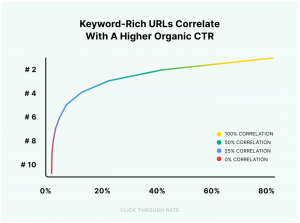The Ultimate Ecommerce SEO Checklist To Drive Traffic and Sales

Given how competitive the e-commerce landscape has become, it’s become the norm to see search engine rankings updated every day.
That’s why it’s become important to optimize your e-commerce SEO checklist to stay on top. Otherwise, you risk someone else’s website receiving more traffic than yours does. Moreover, the poor traffic to your e-commerce site might slow down your business growth, and eventually, your sales won’t increase.
So, do you want to make sure you get all the traffic potential? You’ll need to have more specific, and consistent strategies to rank your e-commerce page. So, let’s explore our ultimate guide to e-commerce SEO to develop a thriving brand.
Why is SEO Important for Your E-Commerce Website?
A 2023 Backlinko study revealed that you can expect a 39.8% CTR rate if you rank at number one for your niche’s SERP. That’s a huge number to consider, especially given that traffic shares of the second and third-ranked results are respectively 18.7% and 10.2%.
However, it can be almost impossible to be on Google or any other search engine’s first page without implementing SEO best practices.
You see SEO brings in tonnes of organic search that can bring you long-term benefits when compared with running paid campaigns. The longer you maintain your rank at the top, the more your conversion rate will increase.
So, don’t just focus on pay-per-click campaigns and ads, concentrate your efforts on e-commerce SEO. At the end of the day, you’ll end up spending less money on ads and you’ll be engaging your audience much more.
8 Strategies that Should Be on Your E-Commerce SEO Checklist
When following an e-commerce SEO checklist, you have to focus on all aspects of SEO such as technical SEO, on-page SEO, off-page SEO, and more.
You also have to ask yourself some basic questions before you start: Can Google find your site? Does Google crawl your site? Is your site indexed? And finally: is it possible for Google to rank your site?
Once you’ve completed your SEO audit and looked at e-commerce hosting, it’s time for you to go through the following steps to make sure your site is on top.
On-Page SEO Tactic: Researching & Optimizing Your Keywords
One of the most common tactics to improve your organic ranking is to find the most popular terms or keywords associated with your product category.
When conducting keyword research, keep the following points in mind: volume of keyword searches, keyword ranking difficulty (KD), and the search intent for keywords. It’s advisable to pick keywords with a high search volume and little competition so that it’s easier to rank.
You should remember to include your main keyword in the URL of your page to improve your e-commerce website’s organic search ranking and CTR. Moreover, for each particular page of your e-commerce website, select a target keyword along with a few related LSI terms. However don’t go overboard and clutter your keyword list; instead, make sure it has relevancy to the content of the page you are linking to.
Another way to make sure every page on your website is different and relevant to its content is by optimizing your URL and H1 header for search engines.

Source: Backlinko
Additionally, ensure that each URL is distinct so that no two pages are targeting the same keyword. Otherwise, Google might become confused about which page is more relevant for the specific term.
Off-Page SEO Tactic: Focus on High-Quality Backlinking
When you have more backlinks to your website, Google automatically trusts your site more and this increases your chances of ranking higher in the search results. So, your domain authority (DA) increases, which is a crucial indicator of how competitive your website is.
But this requires you to establish strong relationships with other industry members or leaders. So, you can also write guest posts for other online publications or industry-related websites and include a link to your website in the article.
It’s also worth it to get in touch with influencers for partnership by using cold emails as an outreach tool. This is also useful if you’re looking to connect with writers or publishers to ask them for a review or some feedback on your product. They will almost certainly link back to your website if they approve. You can use LinkedIn data scraper to find other website owners or relevant leads and get in touch with them to request a backlink on their sites.
Technical SEO: Go with a Mobile-First Approach
Although it isn’t a requirement from an SEO perspective, how successful your eCommerce website is depends on whether it’s mobile-friendly or not. Even Statista reported that globally, nearly 70% of traffic to retail websites comes from smartphones.
When it comes to dealing with visitors using mobile devices, there are generally two ways to go about it:
- If the website is responsive, it will change to fit the user’s device on its own.
- It’s possible to create a website that is optimized for mobile devices just for your target audience. You can use this approach if a responsive design would make it more difficult to provide a better user experience.
Take a look at ASOS’s mobile app that allows their customers to shop on the go, and it aligns seamlessly with their desktop version:

Source: Design Rush
In case, you’re wondering if your site is mobile-friendly enough, go through Google’s test to check if it’s good for you. Remember: since the mobile version of your e-commerce website will be indexed first, make sure the URLs for the desktop and mobile versions remain the same.
Content Strategy Tactic: Level Up Your Content
Making ensuring that all of your website pages—including product detail pages—have accurate, comprehensive, and current content will help you improve your SEO for both Google and your target audience. If you’re writing your e-commerce content clearly and using good grammar, your website is now better optimized.
However, you should prioritize the URL, page title, and first paragraph right at the beginning of your material. A good way you can make sure to create effective content is by using AI as a tool to engage your readers.
On-Page SEO Tactic: Optimize Your Images
If every product on your website includes a high-quality image with some descriptive alt text, Google will find it easier to understand and trust your website.
So, you need to make sure your photos are good enough so that people who are blind or visually impaired may understand what your photos are about along with Google.

Source: Venngage
Once you link your product description and photos, your alt text can help create a cohesive brand experience. Make sure to choose self-explanatory or descriptive file names which can help improve your SEO ranking.
Off-Page SEO Tactic: Get Your Site on Business Listings
It’s possible that at some point you’ve heard about listing your business on online directories. When your name, address, and phone number (NAP) are mentioned together on these directories, some search engines take that as a sign of trust. This also serves as a foundation for backlinks which further gives search engine algorithms to identify that your website is legitimate.
Some examples where you can list your company are Google My Business, Bing Places, Yelp, Yellow Pages, and more. There are more directories you can look up online to choose the most compatible one.
Technical SEO: Add Schema Markup to Your Site
When explaining your sites to search engines, schema markup or structured data can help search engines understand your content better.
All you have to do is include a few HTML elements such as price, availability, ratings and reviews, and other details. Once Google gets a hold of this data, it automatically chooses your product instead of other related ones.

Source: Ahrefs
Not only does this set you apart from the competition, but you can also increase your conversion and click-through rates.
Content Strategy Tactic: Update Your Content & Remove Duplicacy
After taking a close look at the information on your website, you should determine if it should be changed or left alone.
You shouldn’t waste your SEO efforts on content that doesn’t significantly improve or matter for the user experience. That’s why you should include images, descriptions, and technical specifications on every product page.
Something else to keep in mind is that when you write for multiple products or categories on your eCommerce website, you should refrain from creating duplicate content that uses the same keywords or search terms.
If this leads to keyword cannibalization, it can create competition in search engine results within your product pages. That’s why, you should develop targeted content for every product or concern to cover more search intents and target keywords.
Bonus Tip: If you have discontinued any products, don’t just delete that specific page, infact you can redirect your customers to an alternative. This not only saves your SEO optimization efforts, but also you might be increasing sales elsewhere.
Should You Use an E-Commerce Checklist for Your SEO Efforts?
Once you follow our e-commerce SEO checklist, it makes sure that you have a strategy in place to thoroughly optimize all aspects of your website. However, the first step should be to assess whether Google can crawl, index, and rank your website.
Remember that you shouldn’t just stop once you’ve completed the list. There are always options to improve your website functionality, keep up with search engine optimization best practices, and implement customer feedback or recommendations.
